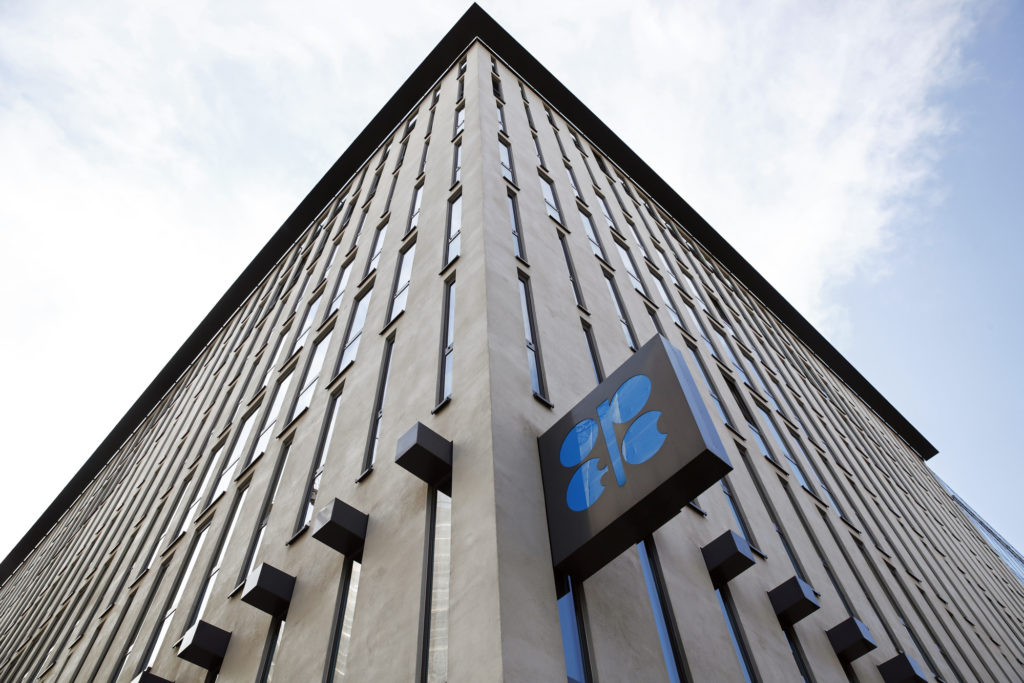
Oil headed for a third weekly increase on expectations that production cuts by OPEC and resilient fuel demand will keep global markets in balance.
Futures rose as much as 1.7 percent in New York, with gains over the past three weeks totaling about 16 percent. OPEC’s production fell by the most in almost two years in December before a fresh round of cuts started this month, and Russia is aiming to speed up the pace of its curbs. The International Energy Agency maintained its outlook for an acceleration in global demand growth this year as lower prices offset the economic slowdown.
Crude has held on to its rally above $50 a barrel for over a week, rebounding more than 20 percent from a low on Dec. 24. While a prolonged government shutdown in the U.S. and uncertainties over the health of the global economy have rattled broader financial markets, oil prices have responded to signs that the Organization of Petroleum Exporting Countries and its allies have started to clear a glut.
“It looks as if the market is coming into balance, and maybe into deficit later in the first part of the year,” Neil Atkinson, head of the oil industry and markets division at the IEA, said in a Bloomberg television interview.
West Texas Intermediate crude for February delivery rose as much as 86 cents to $52.93 a barrel on the New York Mercantile Exchange, and was at $52.57 as of 12:28 p.m. London time. The contract lost 24 cents on Thursday. Futures are up 1.9 percent this week.
Brent for March settlement advanced 46 cents to $61.64 a barrel on the London-based ICE Futures Europe exchange. Prices are up 2 percent this week, and 15 percent higher this month. The global benchmark crude was at an $8.79 premium to WTI for March.
Production from OPEC’s 14 members sank by 751,000 barrels a day last month, with just over half the reduction accounted for by Saudi Arabia, according to a report from the group’s secretariat. It’s the biggest cut since the organization kicked off a previous round of curbs in early 2017.
Earlier in the week, Saudi Energy Minister Khalid Al-Falih said he’s confident the cuts will have a “strong impact” on the market. His Russian counterpart, Alexander Novak, insisted his country is trying to speed up its agreed reduction, just days after Al-Falih said Moscow’s curbs had “started slower than I like.” Russia’s output level, along with that of the Saudis, is crucial to ensuring the success of the agreement to avert a further supply surplus.
In the U.S., crude production climbed by 200,000 barrels a day last week to 11.9 million, the highest level in weekly figures compiled by the Energy Information Administration since 1983. While nationwide inventories dropped for a sixth time in seven weeks, stockpiles of gasoline and distillates rose by more than twice the amount estimated in a Bloomberg survey.
Other oil-market news: OPEC compliance with crude-oil output cuts rose to 163 percent in December, according to Bloomberg calculations from the group’s secondary-source data. The U.S. is likely to allow China, India, Japan, South Korea and Turkey to import Iranian oil past a May 4 waiver deadline, despite recent comment to the contrary, Eurasia Group said in a note. Venezuela risks a fresh plunge in oil output, Barclays analysts said in a note. Production may decline by about 350,000 barrels a day on average in 2019, they said, adding that a drop of double that is a “real possibility.” JXTG Holding Inc., Japan’s biggest refiner, said its long-term survival is tied to an inevitability: the closing of more refineries.
Recommended for you
